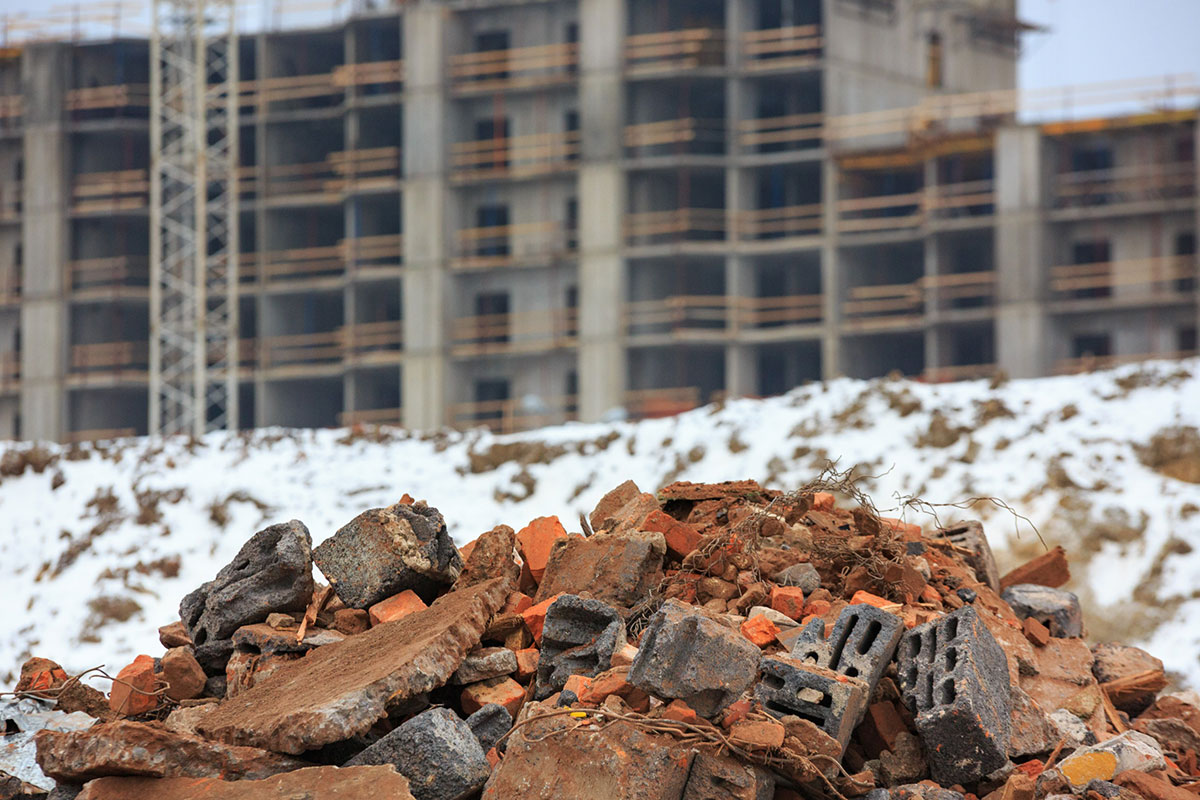Waste and Materials Management on a Construction Jobsite: Insights from Jeff Spencer

When you’re managing a jobsite, dealing with waste and materials is a constant challenge. If you don’t plan ahead, you’ll end up wasting time and money, not to mention space. ProfitDig’s own Jeff Spencer, a professional project manager in the construction world, has some insights on managing waste and materials effectively.
What’s the Waste Situation Like?
According to Jeff, for excavation jobs, most of the waste is going to be soil, rock, or other “dirt-related” materials. But it’s not as simple as just hauling that off. In fact, Jeff often works to leave as much of that material on-site as possible. “I qualify my bids to leave material on site,” Jeff said. If he can’t do that, he factors in the cost of trucking it off.
Here’s the problem these days: it’s getting harder to find places to dump waste in Middle Tennessee, and many other places. “Used to, you could find a farmer who needed fill material, and it was a win-win. Not anymore,” Jeff explained. Now, regulations and environmental concerns mean you’ve got to haul it to a certified dump site, which adds cost to every load.
Estimating: Getting It Right
When it comes to managing materials and waste, you have to be sharp with your estimates. Jeff pointed out that different contractors will come up with different numbers for the same job. One guy might think the swell factor (the amount material expands when dug out) is 10%, while another thinks it’s 15%. Same goes for how wide you think a trench will be—3 feet wide or 4 or 5 feet? These small differences can mean big changes in how much material you’re dealing with.
“You’ve got to be strategic in estimating,” Jeff said. He even admitted he’ll sometimes eat 5-10% of the haul-off costs just to be the low bidder. “You have to consider, am I willing to take some of that loss to win the job?”
Handling Spoil Material: Stone vs. Spoil
When you’re installing utilities, things can get tricky. If you’re digging through an existing street, everything you pull out has to go—it’s 100% haul-off. And that means replacing it all with stone, which isn’t cheap. Jeff noted that the price of stone has nearly doubled in the past year, from around $15 a ton to $28.
For jobs where you can backfill, Jeff recommends compacting spoil material instead of replacing everything with stone. “If the material is suitable, we price it to put it back in lifts, compact it, and get it tested,” he said. That’s a cost-effective approach, but you need to qualify it in your bid. Otherwise, you could be forced into using 100% stone backfill, which is going to hit your bottom line hard.
Managing Miscellaneous Waste
Not all waste is dirt and rock, though. If you’re dealing with a building site, you’re going to have boxes, packaging, and other general trash. Most of the time, your general contractor (GC) will provide a dumpster on-site, but not always. Depending on the situation, you may need your own dumpster, especially in tight downtown areas where space is limited.
One of Jeff’s tips: if you’ve got the space, consider getting two dumpsters dropped off at once. That way, while one’s being hauled off, you’ve got a second one ready to go. It keeps things running smoothly and helps avoid downtime waiting for an empty bin.
Hazardous Waste: Dealing with the Unknown
When it comes to hazardous waste, like contaminated soil or asbestos, Jeff says you’ll usually know what you’re dealing with up front. “If you’ve got contaminated soil, you know you’ve got to take it somewhere and treat it,” he explained. But if you’re doing demo work on an older building, you’ve got to be on the lookout for asbestos.
Here’s something crazy—there are still areas in Middle Tennessee with asbestos-laden water pipes underground. “It’s wild, but they’re still doing away with those as they upgrade their systems,” Jeff said. Even though asbestos is dangerous when disturbed, it was a pretty durable material when left alone.
So what’s the takeaway? Managing waste and materials is all about planning ahead. Whether it’s soil, stone, or hazardous materials, you’ve got to have a game plan. As Jeff put it, “you have to be strategic,” especially when it comes to estimating and managing costs. And always make sure you’re qualifying your bids to protect yourself from those unexpected expenses that can sneak up on you.
More recommended articles
Maximizing Job Site Efficiency on a Construction Site
Culvert Pipes: Size Does Matter
Jeff Spencer’s Advice for Working with Easements: the Importance of Proper Documentation
Stop losing profit.
Build bids in minutes and track every dime with ProfitDig.
Start Risk-Free30-Day Money Back Guarantee